The last day of deer or elk season is usually a day that most hunters dread, often trying to squeeze in as much time afield before that final minute of legal shooting light fades away. After all, the last day typically symbolizes the beginning of an impatient and difficult layoff that makes even the casual hunter long for hunting season to return. I suppose a few embrace the last day, especially after a three to four month season that usually warrants some much needed rest and relaxation. However for those of us who live, eat, and breathe bowhunting, I’ve learned the last day of the big game season can open up a totally new hunting opportunity. With just a little bit of additional equipment, some scouting, and the ability to operate a call, you can extend your bow season throughout the spring and into the summer, creating a year round bowhunting adventure.
 Hunting predators also allows hunters a chance to reduce predation in their respective hunting area which is why it is becoming more popular every year, especially with firearms. A simple television surfing session on some of the outdoor networks support this idea, as several shows now air predator hunting and the challenges it offers. Don’t let the fact that firearms are generally shown discourage you, as I’ve learned that bowhunting predators is an extremely challenging hunt, but with a little luck and practice, can be successful with a bow and arrow.
Hunting predators also allows hunters a chance to reduce predation in their respective hunting area which is why it is becoming more popular every year, especially with firearms. A simple television surfing session on some of the outdoor networks support this idea, as several shows now air predator hunting and the challenges it offers. Don’t let the fact that firearms are generally shown discourage you, as I’ve learned that bowhunting predators is an extremely challenging hunt, but with a little luck and practice, can be successful with a bow and arrow.
 Most electronic callers today are pre-loaded with numerous digital sounds mimicking wounded or distressed animals that coyotes and bobcats can not seem to resist. There are several manufacturers producing wireless/remote electronic (digital) callers. FoxPro, Johnny Stewart, and Primos are just a few that offer wireless remote capabilities with a variety of call sounds. These types of calls generally range in cost from about $150 all the way up to $1000 depending on the quality and features available. I have a FoxPro Spitfire that works fine for my needs. I use an additional external speaker to gain a bit more volume that works well on days where a slight wind may be present. I have a buddy that has a FoxPro Prairie Blaster that can produce loud sounds and hold hundreds of calls. As with any equipment, they higher the price tag the more features offered. However, my $180 FoxPro Spitfire produces enough volume and holds 24 different distress calls.
One other piece of equipment that I’ve found very valuable for bowhunting predators is the use of a mechanical decoy. Mojo and FoxPro both make these battery operated furry decoys that move or flutter intermittently as you’re calling. Between having your call a few yards away from where you are set up and having a moveable small furry decoy, you can increase your chances of drawing your bow undetected at close range. I would highly recommend a decoy, especially for bobcats who typically take time to come in. Once a bobcat seeing a moving decoy, I’ve found their approach is quicker and all attention is on the call and decoy. In 2010, I used my call and a Mojo decoy to entice a bobcat to 20 yards. As I drew my bow, the bobcat never even looked my way, as it was literally on top of my decoy trying to “kill” it. How’s that for exciting!
Some other basic equipment I use for bowhunting predators is full camouflage that blends in with your current surrounds. There are several camouflage manufacturers that provide various types of patterns and colors. I’ve used Predator, Sitka, Kuiu, and Kings in the past with success. Again, depending on the terrain and vegetation dictates what pattern I choose.
Face masks, gloves, and a knee pads are a must for me as well. A predator will pick up on shinny hands and faces immediately, so they’ll need to be concealed. Unlike firearms, your wait is not over at 100 yards. Sometimes you’ll have to continue coaxing a predator in further to ensure a good, ethical bow shot. Having knee pads allows you to remain comfortable and in the ready position without having to move.
Most electronic callers today are pre-loaded with numerous digital sounds mimicking wounded or distressed animals that coyotes and bobcats can not seem to resist. There are several manufacturers producing wireless/remote electronic (digital) callers. FoxPro, Johnny Stewart, and Primos are just a few that offer wireless remote capabilities with a variety of call sounds. These types of calls generally range in cost from about $150 all the way up to $1000 depending on the quality and features available. I have a FoxPro Spitfire that works fine for my needs. I use an additional external speaker to gain a bit more volume that works well on days where a slight wind may be present. I have a buddy that has a FoxPro Prairie Blaster that can produce loud sounds and hold hundreds of calls. As with any equipment, they higher the price tag the more features offered. However, my $180 FoxPro Spitfire produces enough volume and holds 24 different distress calls.
One other piece of equipment that I’ve found very valuable for bowhunting predators is the use of a mechanical decoy. Mojo and FoxPro both make these battery operated furry decoys that move or flutter intermittently as you’re calling. Between having your call a few yards away from where you are set up and having a moveable small furry decoy, you can increase your chances of drawing your bow undetected at close range. I would highly recommend a decoy, especially for bobcats who typically take time to come in. Once a bobcat seeing a moving decoy, I’ve found their approach is quicker and all attention is on the call and decoy. In 2010, I used my call and a Mojo decoy to entice a bobcat to 20 yards. As I drew my bow, the bobcat never even looked my way, as it was literally on top of my decoy trying to “kill” it. How’s that for exciting!
Some other basic equipment I use for bowhunting predators is full camouflage that blends in with your current surrounds. There are several camouflage manufacturers that provide various types of patterns and colors. I’ve used Predator, Sitka, Kuiu, and Kings in the past with success. Again, depending on the terrain and vegetation dictates what pattern I choose.
Face masks, gloves, and a knee pads are a must for me as well. A predator will pick up on shinny hands and faces immediately, so they’ll need to be concealed. Unlike firearms, your wait is not over at 100 yards. Sometimes you’ll have to continue coaxing a predator in further to ensure a good, ethical bow shot. Having knee pads allows you to remain comfortable and in the ready position without having to move.
 Other terrain features can be natural cliffs or deep gorges, water sources like lakes and streams, and occasionally wide open spaces where predators sometimes feel uncomfortable crossing. If you find a location with lots of sign that has these features, your chances of bringing in a predator within bow range increases dramatically.
If terrain features are not an available, the placement of your call and decoy are critical. Based on the foliage and terrain, you should have a fairly good idea of where the predator will be coming from. If your call and decoy is strategically placed away from your location, while allowing you to be downwind with good concealment and cover, you should be able to increase your odds of calling in a predator.
Other terrain features can be natural cliffs or deep gorges, water sources like lakes and streams, and occasionally wide open spaces where predators sometimes feel uncomfortable crossing. If you find a location with lots of sign that has these features, your chances of bringing in a predator within bow range increases dramatically.
If terrain features are not an available, the placement of your call and decoy are critical. Based on the foliage and terrain, you should have a fairly good idea of where the predator will be coming from. If your call and decoy is strategically placed away from your location, while allowing you to be downwind with good concealment and cover, you should be able to increase your odds of calling in a predator.
 Predators (coyote, bobcat, fox) are very thin skinned animals and not very large when compared to big game. I aim in the same locations as I do for big game, however, since they are fairly small and thin skinned, I have arrowed several on severe quartering away shots that enter their back hip and exit in front of their shoulder. It’s a devastating shot that most of today’s bows are capable of producing in terms of complete penetration. I’ve never had an issue penetrating non-vital areas to get to vital areas on predators with an arrow.
Predators (coyote, bobcat, fox) are very thin skinned animals and not very large when compared to big game. I aim in the same locations as I do for big game, however, since they are fairly small and thin skinned, I have arrowed several on severe quartering away shots that enter their back hip and exit in front of their shoulder. It’s a devastating shot that most of today’s bows are capable of producing in terms of complete penetration. I’ve never had an issue penetrating non-vital areas to get to vital areas on predators with an arrow.
Bowhunting Predators
With mule deer declining in the West and predation a major concern among sportsmen, predator hunting can be an exciting segues between big game seasons. Most Western states offer liberal seasons for predators and many are year round for coyotes. Some offer year round bobcat hunting as well, however a few (California) have seasons on bobcats and fox, so make sure you check your respective states regulations if you plan on hunting them. Hunting predators also allows hunters a chance to reduce predation in their respective hunting area which is why it is becoming more popular every year, especially with firearms. A simple television surfing session on some of the outdoor networks support this idea, as several shows now air predator hunting and the challenges it offers. Don’t let the fact that firearms are generally shown discourage you, as I’ve learned that bowhunting predators is an extremely challenging hunt, but with a little luck and practice, can be successful with a bow and arrow.
Hunting predators also allows hunters a chance to reduce predation in their respective hunting area which is why it is becoming more popular every year, especially with firearms. A simple television surfing session on some of the outdoor networks support this idea, as several shows now air predator hunting and the challenges it offers. Don’t let the fact that firearms are generally shown discourage you, as I’ve learned that bowhunting predators is an extremely challenging hunt, but with a little luck and practice, can be successful with a bow and arrow.
Equipment
I guess the term “hunting” predators should be properly clarified as “calling” predators, since most hunters call in coyotes, bobcats and foxes by hand held mouth calls or electronic callers (where legal). I’ve used both (hand held & electronic) and when hunting alone, prefer electronic callers since you can direct the predator away from you and to a remote speaker generally located a few yards away. This allows the bowhunter to draw their bow when a predator comes in looking for that wounded critter making those God awful sounds. Since their attention is on the meal they have waiting for them, I can often draw my bow undetected. Coyotes and bobcats seem to pick up even the slightest movement, so it’s imperative to remain still, be completely concealed and set up your call wisely. Most electronic callers today are pre-loaded with numerous digital sounds mimicking wounded or distressed animals that coyotes and bobcats can not seem to resist. There are several manufacturers producing wireless/remote electronic (digital) callers. FoxPro, Johnny Stewart, and Primos are just a few that offer wireless remote capabilities with a variety of call sounds. These types of calls generally range in cost from about $150 all the way up to $1000 depending on the quality and features available. I have a FoxPro Spitfire that works fine for my needs. I use an additional external speaker to gain a bit more volume that works well on days where a slight wind may be present. I have a buddy that has a FoxPro Prairie Blaster that can produce loud sounds and hold hundreds of calls. As with any equipment, they higher the price tag the more features offered. However, my $180 FoxPro Spitfire produces enough volume and holds 24 different distress calls.
One other piece of equipment that I’ve found very valuable for bowhunting predators is the use of a mechanical decoy. Mojo and FoxPro both make these battery operated furry decoys that move or flutter intermittently as you’re calling. Between having your call a few yards away from where you are set up and having a moveable small furry decoy, you can increase your chances of drawing your bow undetected at close range. I would highly recommend a decoy, especially for bobcats who typically take time to come in. Once a bobcat seeing a moving decoy, I’ve found their approach is quicker and all attention is on the call and decoy. In 2010, I used my call and a Mojo decoy to entice a bobcat to 20 yards. As I drew my bow, the bobcat never even looked my way, as it was literally on top of my decoy trying to “kill” it. How’s that for exciting!
Some other basic equipment I use for bowhunting predators is full camouflage that blends in with your current surrounds. There are several camouflage manufacturers that provide various types of patterns and colors. I’ve used Predator, Sitka, Kuiu, and Kings in the past with success. Again, depending on the terrain and vegetation dictates what pattern I choose.
Face masks, gloves, and a knee pads are a must for me as well. A predator will pick up on shinny hands and faces immediately, so they’ll need to be concealed. Unlike firearms, your wait is not over at 100 yards. Sometimes you’ll have to continue coaxing a predator in further to ensure a good, ethical bow shot. Having knee pads allows you to remain comfortable and in the ready position without having to move.
Most electronic callers today are pre-loaded with numerous digital sounds mimicking wounded or distressed animals that coyotes and bobcats can not seem to resist. There are several manufacturers producing wireless/remote electronic (digital) callers. FoxPro, Johnny Stewart, and Primos are just a few that offer wireless remote capabilities with a variety of call sounds. These types of calls generally range in cost from about $150 all the way up to $1000 depending on the quality and features available. I have a FoxPro Spitfire that works fine for my needs. I use an additional external speaker to gain a bit more volume that works well on days where a slight wind may be present. I have a buddy that has a FoxPro Prairie Blaster that can produce loud sounds and hold hundreds of calls. As with any equipment, they higher the price tag the more features offered. However, my $180 FoxPro Spitfire produces enough volume and holds 24 different distress calls.
One other piece of equipment that I’ve found very valuable for bowhunting predators is the use of a mechanical decoy. Mojo and FoxPro both make these battery operated furry decoys that move or flutter intermittently as you’re calling. Between having your call a few yards away from where you are set up and having a moveable small furry decoy, you can increase your chances of drawing your bow undetected at close range. I would highly recommend a decoy, especially for bobcats who typically take time to come in. Once a bobcat seeing a moving decoy, I’ve found their approach is quicker and all attention is on the call and decoy. In 2010, I used my call and a Mojo decoy to entice a bobcat to 20 yards. As I drew my bow, the bobcat never even looked my way, as it was literally on top of my decoy trying to “kill” it. How’s that for exciting!
Some other basic equipment I use for bowhunting predators is full camouflage that blends in with your current surrounds. There are several camouflage manufacturers that provide various types of patterns and colors. I’ve used Predator, Sitka, Kuiu, and Kings in the past with success. Again, depending on the terrain and vegetation dictates what pattern I choose.
Face masks, gloves, and a knee pads are a must for me as well. A predator will pick up on shinny hands and faces immediately, so they’ll need to be concealed. Unlike firearms, your wait is not over at 100 yards. Sometimes you’ll have to continue coaxing a predator in further to ensure a good, ethical bow shot. Having knee pads allows you to remain comfortable and in the ready position without having to move.
Choosing a Calling Location
One of the most important factors to successfully calling in a predator to within bow range is, in my opinion, choosing the right calling location. Your normal scouting techniques apply to predators as well (tracks, droppings, etc.), but terrain features are just as, if not more, important when choosing your set up. Most predators will circle downwind from the call and try to sneak in and ensure danger is not present. There are those occasional quick responses from coyotes that come in on the dead run, however, it has been my experience they still approach from a downwind position. Make no mistake, coyotes are one of the smartest critters on the planet, being able to adapt to all living conditions and flourish. Choosing a location where the wind is favorable and a natural barrier to your downwind side is the best. This prevents predators from coming in from behind (downwind) and forces them to come in at least from a crosswind location. One location I consistently call in the desert near my home is an agricultural field with a 3 acre thick brush patch in the middle. There is a water canal on the far North side of the field. I usually set up just inside the brush line, with the field and canal directly behind me. With the wind in my face, it’s a great location to call from, as it forces predators to come in from the side and never being able to smell me. Other terrain features can be natural cliffs or deep gorges, water sources like lakes and streams, and occasionally wide open spaces where predators sometimes feel uncomfortable crossing. If you find a location with lots of sign that has these features, your chances of bringing in a predator within bow range increases dramatically.
If terrain features are not an available, the placement of your call and decoy are critical. Based on the foliage and terrain, you should have a fairly good idea of where the predator will be coming from. If your call and decoy is strategically placed away from your location, while allowing you to be downwind with good concealment and cover, you should be able to increase your odds of calling in a predator.
Other terrain features can be natural cliffs or deep gorges, water sources like lakes and streams, and occasionally wide open spaces where predators sometimes feel uncomfortable crossing. If you find a location with lots of sign that has these features, your chances of bringing in a predator within bow range increases dramatically.
If terrain features are not an available, the placement of your call and decoy are critical. Based on the foliage and terrain, you should have a fairly good idea of where the predator will be coming from. If your call and decoy is strategically placed away from your location, while allowing you to be downwind with good concealment and cover, you should be able to increase your odds of calling in a predator.
When to Shoot
There are many variables that come into play on when a bowhunter should draw his bow, but here’s what has worked for me. For coyotes, I usually begin my draw the moment I see them working there way in, even if they’re a hundred yards out, providing I’m concealed and can do so undetected. Most of the time, they’re coming in fairly quick, and being at full draw when they reach your shooting lane is a huge benefit, as it allows you to aim without being rushed so you can follow through and make a good shot. For bobcats, they generally come in slow, so each situation dictates my response on when I draw. Most of the time, it’s when they are within a few yards of the call and decoy and their attention is focused solely on a perceived meal they about to dive into. Predators (coyote, bobcat, fox) are very thin skinned animals and not very large when compared to big game. I aim in the same locations as I do for big game, however, since they are fairly small and thin skinned, I have arrowed several on severe quartering away shots that enter their back hip and exit in front of their shoulder. It’s a devastating shot that most of today’s bows are capable of producing in terms of complete penetration. I’ve never had an issue penetrating non-vital areas to get to vital areas on predators with an arrow.
Predators (coyote, bobcat, fox) are very thin skinned animals and not very large when compared to big game. I aim in the same locations as I do for big game, however, since they are fairly small and thin skinned, I have arrowed several on severe quartering away shots that enter their back hip and exit in front of their shoulder. It’s a devastating shot that most of today’s bows are capable of producing in terms of complete penetration. I’ve never had an issue penetrating non-vital areas to get to vital areas on predators with an arrow.
Types of Call Sounds
By far the most popular type of calls for predator hunters is a wounded cottontail and wounded jackrabbit sound. I’ve used them several times over the years and have called in quite a few predators with them. However, I’ve recently been using a FoxPro sound called “Lucky Bird” that is dynamite for both coyotes and bobcats. It’s a distressed bird that just sounds awful, but very good! I’ve called in several coyotes and bobcats with this particular sound and it seems to be my #1 choice anymore. Other predator hunters I know have used several other variations of call sounds ranging from fawn in distress, pups in distress, to baby gray fox in distress sounds. Honestly, I think any predator call that mimics an animal in distress will work, since it signifies a free lunch for a predator.Conclusion
Predators can be a fun and challenging animal to hunt with a bow and arrow. With an ample supply of coyotes, bobcats and fox throughout the West, coupled with many states offering year round seasons and healthy bag limits, it can definitely be a new season for those bowhunters looking for a hunt to fill in the gap between big game seasons.




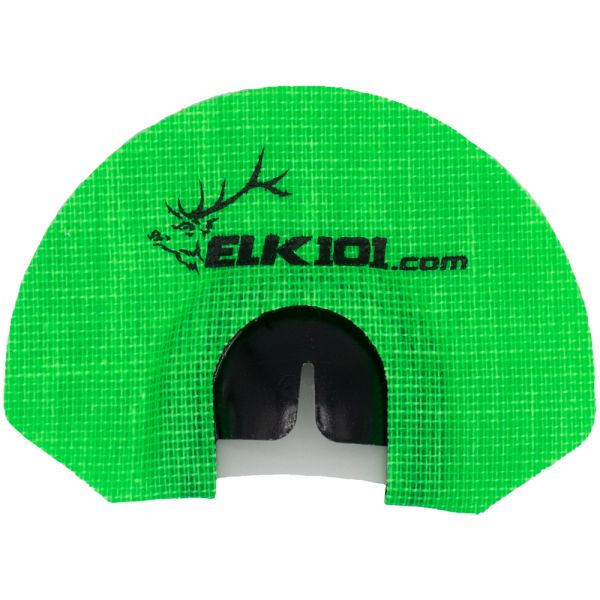
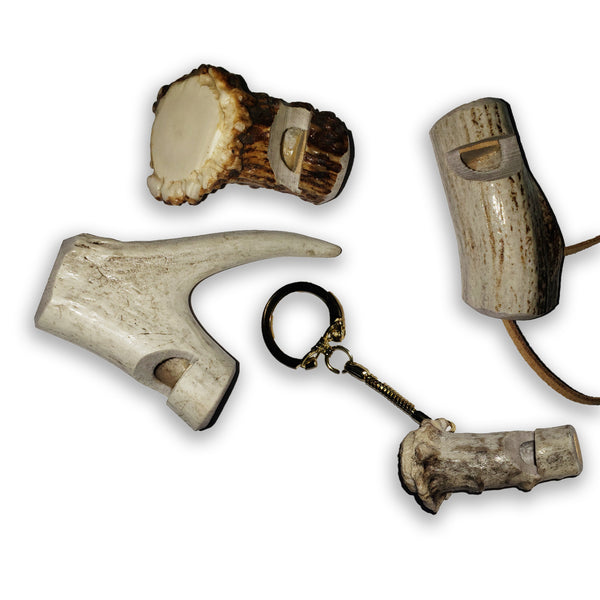
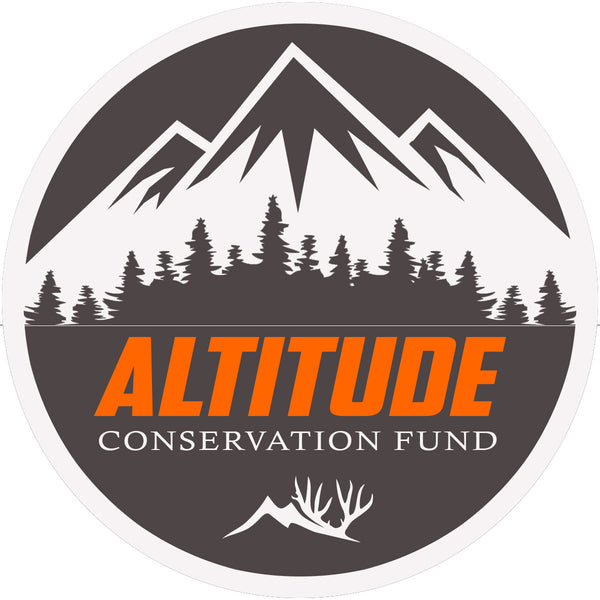
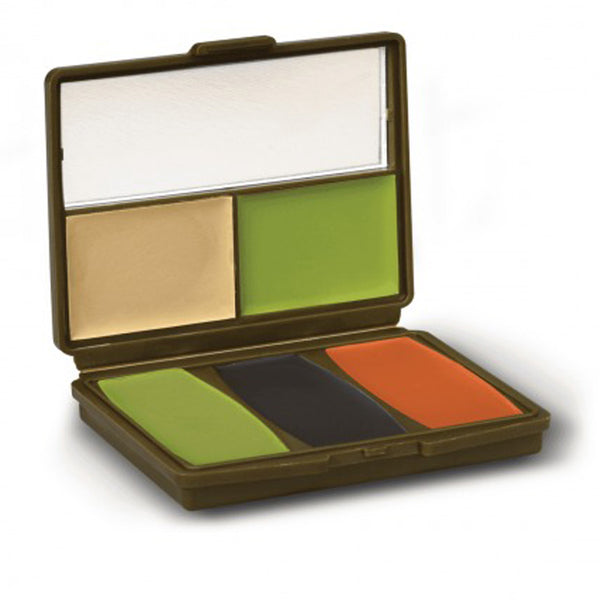
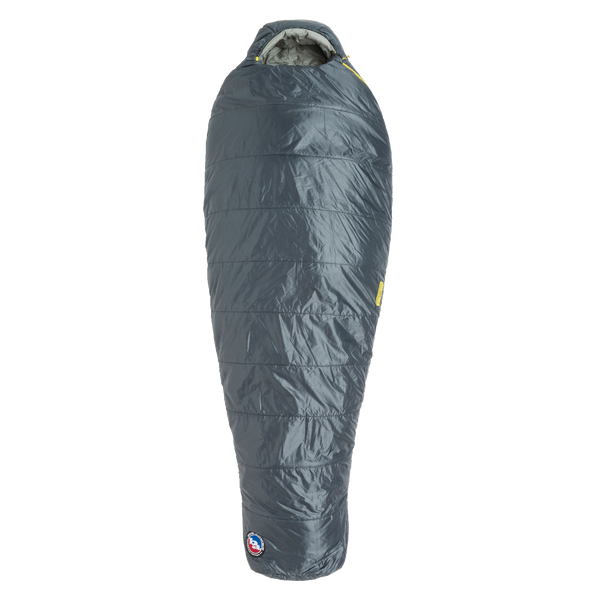








Leave a comment